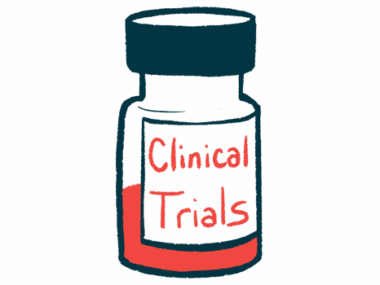Kayfanda wins EU OK for Alagille-related cholestatic pruritus
Treatment sold as Bylvay in US after FDA approval last year
Written by |

Ipsen’s Kayfanda (odevixibat) has been approved, under exceptional circumstances, in the European Union (EU) to treat cholestatic pruritus in people with Alagille syndrome, ages 6 months and older.
Cholestatic pruritus refers to intense itch, or pruritus, associated with cholestasis, that is, slowed or stalled flow of the digestive fluid bile, that results in bile building up in the liver and leaking into the blood.
“Today’s decision is … very welcome. We will now continue in our ongoing efforts to make this new treatment option available for use with patients living in the EU,” Christelle Huguet, PhD, Ipsen’s executive vice president and head of research and development, said in a company press release.
The decision comes about two months after a European committee recommended the therapy’s approval for that indication. The approval draws on data from ASSERT (NCT04674761), a completed Phase 3 clinical study involving 52 children and adolescents with Alagille, where Kayfanda outperformed a placebo at reducing the frequency of scratching due to cholestatic pruritus.
“One of the most common symptoms reported, as a result of the condition, is severe pruritus, with children scratching to the point of bleeding and the itch causing sleep disturbances for the child and their carers,” said Henkjan Verkade, MD, PhD, a pediatric gastro/hepatologist at the Beatrix Children’s Hospital in Groningen in the Netherlands. “To have a new treatment option that has been shown to reduce the itch and improve sleep is a very positive development for the [Alagille syndrome] community.”
Verkade is also a professor of pediatrics at the University of Groningen.
The European Commission decided on the approval under exceptional circumstances because, while the available trial data showed a favorable benefit-risk ratio for the therapy, the trial included a small number of patients and had a short duration. Further data on the long-term safety of Kayfanda is required.
How does Kayfanda work to treat cholestatic pruritus?
Available as a once-daily capsule that can be swallowed or mixed with soft food or liquid, Kayfanda was approved in the U.S. last year as Bylvay for cholestatic pruritus in Alagille patients, ages 12 months or older.
Alagille is a rare genetic syndrome affecting the development of several organs, including the liver. Alagille-associated liver problems, mainly cholestasis in early infancy, occur due to the impaired flow of bile from the liver, where it’s produced, to the intestines, where it helps digest fats from food. As a result, bile accumulates in the liver and leaks into the bloodstream, causing cholestatic pruritus among other symptoms.
Kayfanda contains odevixibat, a small molecule that blocks the action of ileal bile acid transporter (IBAT), a protein that helps in transporting bile from the intestines back to the liver and blood. By suppressing IBAT, Kayfanda prevents further bile accumulation in the liver and blood, thereby easing cholestatic pruritis.
In ASSERT, children and adolescents with a genetically confirmed diagnosis of Alagille were randomly assigned to either Kayfanda at 120 micrograms per kg of body weight or a placebo once a day for 24 weeks, or about six months.
Kayfanda treatment was associated with a significantly greater reduction in itching, as assessed with the caregiver-completed PRUCISION Observer-Reported Outcome scratching scale. Scores range from 0 to 4, with higher scores indicating worse pruritus-associated scratching
Those given Kayfanda had an average score drop of 1.7 points, while those on a placebo showed a 0.8-point score reduction. Also, clinically meaningful reductions, defined as a score decline of 1.5 points or greater, were significantly more frequent in the Kayfanda group (54% vs. 18%). The therapy’s beneficial effects on itching were accompanied by significant reductions in blood level bile acids, the component of bile that’s thought to promote itching, relative to a placebo.
Kayfanda also eased caregiver-reported sleep disturbances caused by itching. After about six months, patients treated with Kayfanda had a reduction of about 40% in both the number of days needing help to fall asleep and the number of days needing soothing, compared with a reduction of 6%-10% in the placebo group.
Bylvay is also approved for progressive familial intrahepatic cholestasis, another rare liver genetic disease, in patients ages 6 months and older in the EU, and patients 3 months and older in the U.S.







